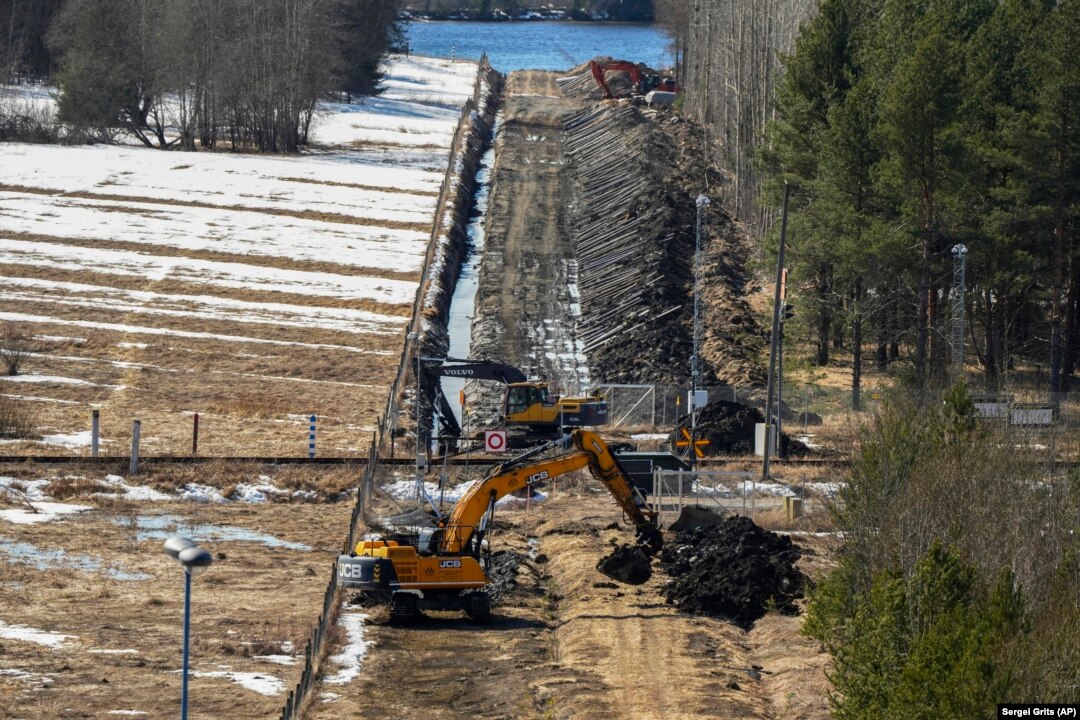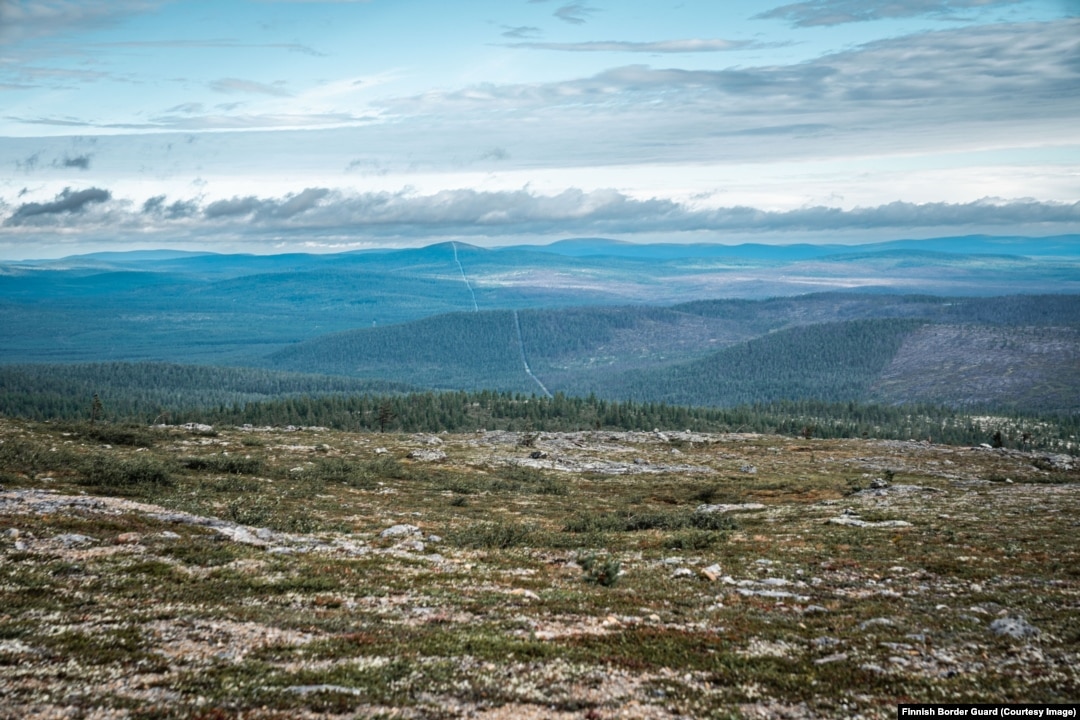Amid Threats From Russia, Finland Breaks Ground On $400 Million Border Fence

This was the scene near Finland’s Pelkola border crossing with Russia on April 14 as excavators worked on readying a strip of the border for a new boundary fence. A green and red post marking Russian territory can be seen on the left-hand side of this photo.

A computer-generated image demonstrating what the three-meter-high fence is projected to look like.
As well as the mesh and razor-wire fence, the barrier will include “an adjacent road, a deforested opening as well as a technical surveillance system,” according to a press release from the Finnish border guard.

A view of the Russian border seen from an unspecified location in Finland.
Helsinki says the new barrier will be designed primarily to stop illegal immigration. In the summer of 2021, the phenomenon of “weaponized migrants” came to the fore after Belarusian strongman Alyaksandr Lukashenka vowed to flood Europe with “drugs and migrants” in retaliation for sanctions. Tens of thousands of largely Middle Eastern migrants then showed up on Belarus's western border attempting to enter EU territory.
Finnish border guard Colonel Mika Rytkoenen near the Russian border on April 14.
Finland’s border guard describes the fence construction, projected to cost some $417 million, as “necessary in situations where illegal entry is instrumentalized or extensive,” adding that “the barrier fence will also reduce Finland's dependence on the effectiveness of Russian border control.”
Signs at the Pelkola border crossing into Russia.
Border Guard Brigadier General Jari Tolppanen told Reuters that in 2022 only 30 illegal crossings were spotted by Finnish border guards, while some 800 attempts were foiled by the Russian side before the migrants could reach Finnish territory.
Finnish (left) and Russian border markers photographed near Imatra in southeastern Finland.
After the April 4 accession of Finland to the NATO military alliance, and Kremlin threats of unspecified retaliation, Tolppanen says "in this totally changed situation, Finland must have more credible and more independent border control.”
The Finnish-Russian border near Imatra, as seen in March 2023.
In areas near human settlements, the border between the two countries is currently lined with a fence designed to stop only wandering livestock, and people can easily hop over it.
Border guards patrol on snowmobiles in the Kuusamo region, alongside Russia, in February 2023.
Much of Finland’s 1,340 kilometer border with Russia is seen as too remote and inaccessible to require any physical barriers. The 200 kilometers of new fencing will instead be placed in areas easily reached by road, mostly in the southeast of the country, but also in the northern Lapland region.
A bear watches two wolves circling in the wilderness by Hukkajarvi, near the Russian border in May 2022.
The border fence received widespread political approval in Finland but environmental groups say it could have a significant impact on the wildlife that thrives in the cross-border region. A spokesman for the Finnish Environment Institute told local media that the fence will result in “fewer wolves, bears and wild boars entering Finland from Russia.”
An excavator at work alongside Finnish border guards near the Pelkola border on April 14.
The new border fence is due to be completed in 2026 and is expected to have a life span of around 50 years.

